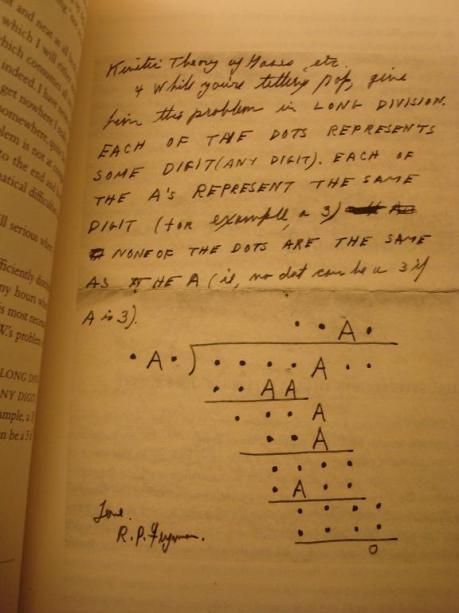Feynman long division
This wiki is incomplete.
This wiki is a stub. Help improve it.
Here's a good example of a Feynman long division.
 Dr. Richard P. Feynman posed the following puzzle: Each of the dots below represents some digit (any digit 0 to 9). Each of the \(A\)'s represents the same digit. None of the dots are the same as \(A.\)
Dr. Richard P. Feynman posed the following puzzle: Each of the dots below represents some digit (any digit 0 to 9). Each of the \(A\)'s represents the same digit. None of the dots are the same as \(A.\)

What is the sum of the divisor, the dividend, and the quotient?
\(\)
Details and Assumptions:
- Both manual and CS solutions are encouraged.
- You can see the original letter below.


The above is a long division with most of the digits of any number hidden, except for the three 7's. Given that each of 0, 1, 2, ..., 9 was used at least once for the hidden digits, figure out all of the digits hiding and submit your answer as the value of the dividend (the 6-digit number being divided).
Details and Assumptions:
- Each \(\mathrm X\) represents a single-digit integer.
- The leading (leftmost) digit of a number cannot be 0.